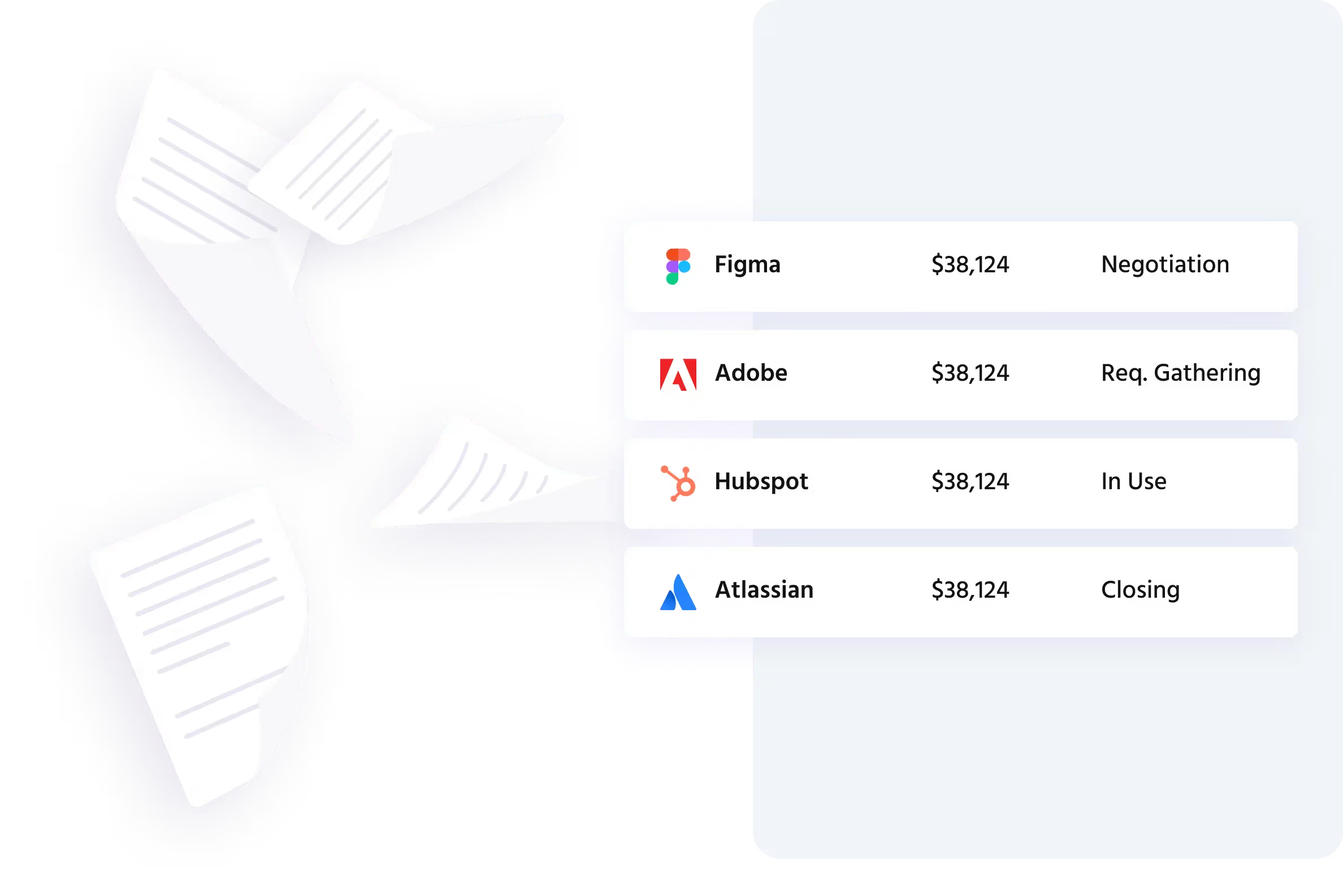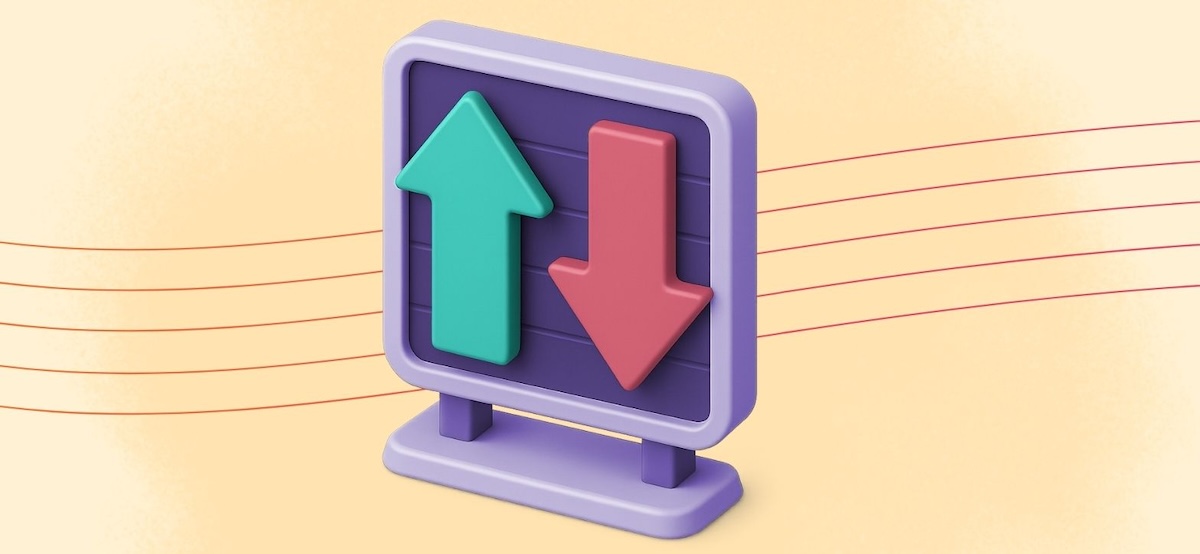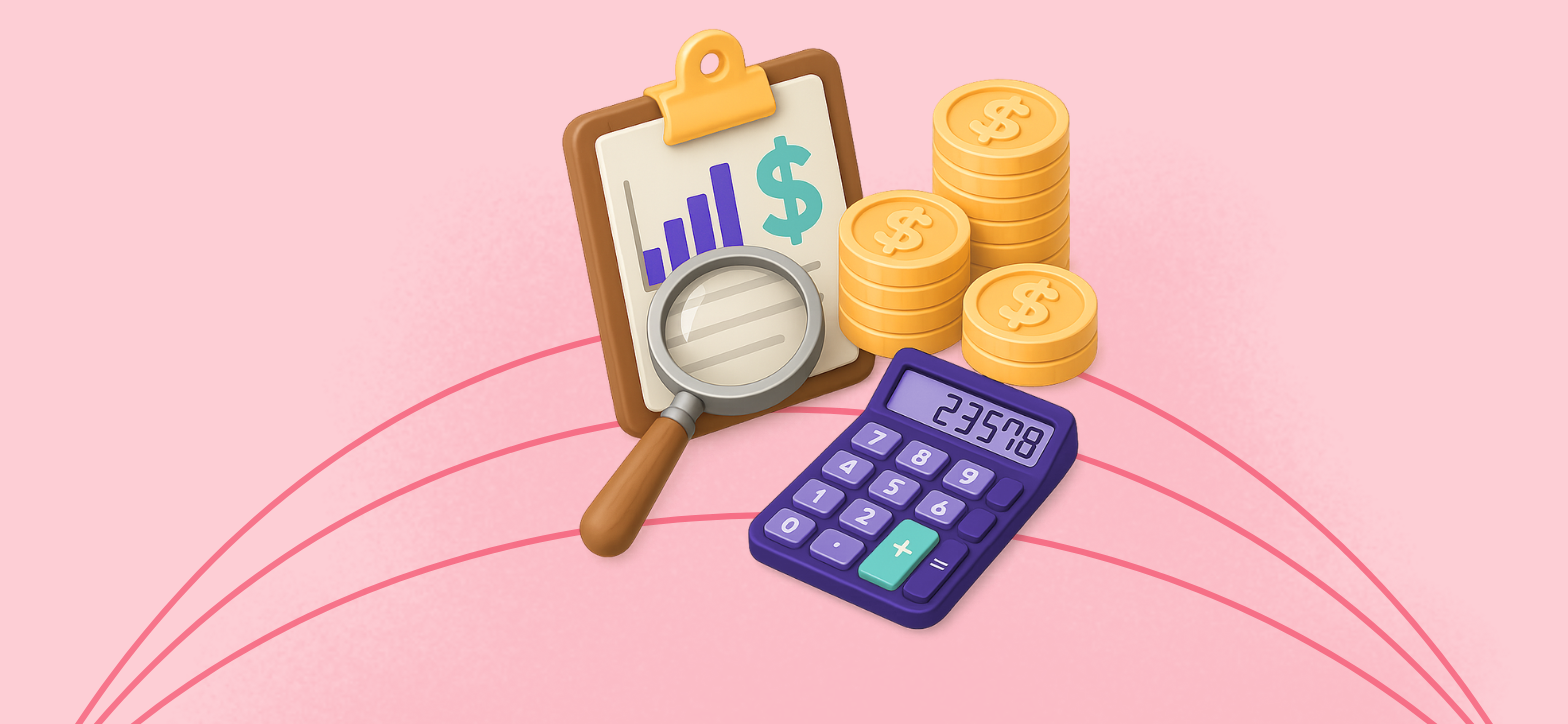Spend management involves tracking, controlling, analyzing, and optimizing expenditures to reduce costs and increase efficiency. In fact, the average business wastes around 30% of its SaaS spend. Bringing visibility into the procurement process shows you where you’re unnecessarily spending money so you can implement strategies to reduce or eliminate wasteful expenses.
Spend management software puts you in control of procurement by showing you exactly where you’re spending resources. By harnessing the power of data and automation, this software can save you both time and money.
Spend Management Challenges
Fast-growing companies often lack a procurement department. They resort to assigning procurement functions to their finance and operations teams who may not have the skill set to optimize spend management. Without the right tools, some of the following problems may arise for these companies.
Lack of Visibility Into Spending
Without a clear understanding of exactly where all of your funds are going, you’ll have difficulty optimizing your procurement process. This is particularly true regarding SaaS management since different teams may use different software products that provide similar services. You may have redundancies in services, which results in wasteful spending that may exceed your budgeted allotment.
Inefficient Processes
Manual or outdated processes for tracking and managing expenses are time-consuming and error-prone, making it difficult for your finance department to accurately monitor and control spending.
Finance teams that have to manually map spending to budget categories are, at best, playing catch-up and, at worst, providing inaccurate and outdated information that will lead to poor planning decisions. As an example, before RainFocus implemented spend management software, they had a haphazard procurement process that resulted in duplicate software and licensing expenses.
Under Resourced, Over Spending
With limited tools and lean procurement or finance teams, spending becomes reactive, leading to budget overruns, maverick spend, and missed cost-saving opportunities like consolidating vendors or renegotiating contracts. Manual processes and fragmented systems exacerbate inefficiencies, resulting in duplicate purchases, untracked renewals, and compliance risks. To overcome this, companies must invest in scalable spend management tools, automate workflows, and prioritize visibility into spending while building a dedicated team to strategically control costs and ensure sustainable growth.
Benefits of Spend Management Automation Software
Carefully managing your organization’s time and money is key to improving your financial stability, a growing concern during these times of economic uncertainty.
Spend management automation solutions are the most efficient way of ensuring that you are spending your company’s time and resources wisely. The best software will use analytics and data insights to help your organization make better decisions, achieve your financial goals, and grow.
Thus, spend management should be on every financial department’s radar, as it can help businesses of all sizes to scale, improve efficiency, and be more sustainable.
How Spend Management Improves Procurement
Automating spend management can help you control procurement-related costs at all stages of the process, from the first request to final approval. Below are some of the specific benefits that you can expect:
Optimized Contract Negotiations and Better Sourcing
Many software companies overcharge because they know you don’t have an efficient means of comparing services. The data provided by your spend management analytics can give your company insight into the true value of the SaaS you invest in, allowing you to make informed, data-driven decisions.
With this information, you can get on equal footing with software sales teams and optimize your contract negotiations. For instance, by using Tropic’s procurement software, Simon Data was able to save 25% across all SaaS contracts.
Additionally, when you have an accurate cost-benefit analysis of your software, you can eliminate wasteful duplication and maximize efficiency. With spend management software, you can stop paying for services and features you don’t need or aren’t using.
Better Compliance and Risk Management
Spend management software shows you spending in real time. As a result, your finance department can change or optimize workflows, ensure spend compliance, and increase ROI.
A centralized application provides visibility into all expenditures as they happen. You can assess risks related to procurement — such as overspending in a particular category — in time to mitigate or avoid them. You’ll also be able to achieve compliance with automatic, user-friendly purchasing controls.
Time and Labor Savings
Centralizing and automating spend management can save you hundreds of hours in tedious, inefficient manual tasks related to your organization’s budget.
Software can automate many manual finance tasks, such as mapping expenses, analyzing negotiations, and reconciling and categorizing expenses. For example, after implementing Tropic’s automated spend management solution, Zapier reduced the time employees spent on procurement by 75%, giving the company 400 hours back per year.
Cost Savings
Automating your SaaS purchasing processes will save you time and money. Benefits include: eliminating duplicate services, negotiating better contract terms, reducing labor hours, and optimizing budget compliance. This in turn will increase your bottom line and save you money. By leveraging spend management software effectively, you can expect significantly improved financial efficiency in all of your procurement processes.
More Efficient Processes
Instead of taxing your team by having them perform manual tasks, you can free them up to focus on value-generating activities to improve other procurement processes.
If you’re a small or mid-sized business operating without a procurement department, automating this will allow your employees to use their skills more wisely and operate more efficiently as a smaller team.
Tactics To Improve Your Spend Management Process
To capture the full benefits, it’s important to build a solid framework and leverage the right software. Here are 6 tips to follow:
1. Determine Your Business Goals and Needs
First, identify how spend management can help you achieve your business goals. This will help you understand what kind of actions and resources to prioritize and give you a baseline to track your progress.
To evaluate if your goals are aligned with your spend management processes, ask questions such as:
- Which of our procurement processes can be automated?
- Is our existing tech stack effective, or does it need additional functionality?
- Do we have interdepartmental communication challenges?
- In what ways is our budget limiting our growth potential?
- How can automated spend management free up resources to deploy in other high-need areas?
When you’ve identified how your existing process is helping or hindering your strategic business goals, you can make decisions about where you should invest more resources and where you should cut back.
2. Identify Sources of Spending
You need an exhaustive list of all spending sources — from petty cash to departmental accounts — to manage them. This step can be challenging, but once you automate the process, you’ll have an overview of your procurement infrastructure. This will allow you to analyze your data for overlooked savings opportunities.
3. Create a Centralized Source of Spending Data
Once you’ve identified spending sources, you need to collect all your spending data in one place. This is something spend management software can do for you.
Centralizing your spending data allows you to easily track spending, identify trends and patterns, and make data-driven decisions about the best way to allocate resources. It will also provide financial transparency and accountability within your organization to minimize compliance issues.
4. Verify Your Data and Make Corrections
When you’re making financial decisions based on data, your decisions are only as good as the information you have. That’s why it’s essential to ensure the data you’re using is accurate and complete.
To do this, validate transactions by reconciling them with receipts, internal communications, inventory, or other methods. Correct any errors such as duplicates, miscategorizations, and missing data.
If your system isn’t automated yet, you’ll have to do this manually, and it will be a tedious process. However, once you’ve switched to spend management software, this will be part of the automated workflow. This is a good time to implement a standards-based process if you don’t have one already.
5. Categorize Spending
Next, create top-level spending categories that align with your business goals and objectives. This will give you insight into whether you’re distributing your resources correctly or if you need to make adjustments in some categories.
If your strategic goals this year are focused on product development, but an analysis of your budget shows you’re investing a disproportionate share into advertising, you may want to reevaluate.
6. Analyze Your Data and Create a Strategy
Using spend management software to analyze your data will provide you with the insights you need to adjust your organizational priorities. If the results don’t line up with your spending goals, you can make corrections as you develop a spending strategy. You can also mine your data for cost savings and duplicate spending.
Optimize Your Spend with a Spend Management Software
As SaaS products become more integral to any modern business, managing your software spending is essential. Tropic is an all-in-one SaaS procurement solution that saves you time and money to give your company a competitive edge.
By using Tropic to manage your purchasing process, you’ll have your team, tools, and data all in one place for informed, effortless procurement.
FAQ's
How is spend management different from expense management?
Spend management and expense management are distinct, though related, concepts within financial operations. Spend management focuses on optimizing overall company spending, including procurement and supplier relationships, to drive cost savings and efficiency. In contrast, expense management deals specifically with tracking and controlling employee-incurred costs like travel or office supplies. While expense management is about managing individual operational expenses, spend management takes a strategic approach to the organization’s total expenditures.
How does spend management software work?
Spend management software centralizes data from various sources (invoices, purchase orders, expense reports) to provide a comprehensive view of spending. It automates processes, sets spending limits, and generates reports for analysis.
What are the key components of a spend management solution?
Procurement, supplier management, compliance and control, contract management, invoicing, expense management, payments, and analytics.
Can spend management software integrate with our existing financial systems?
Yes, most spend management solutions offer integration capabilities with accounting, ERP, and other financial systems.
How do I implement a spend management system?
The implementation process typically involves needs assessment, software selection, data migration, user training, and process optimization.
How long does it take to implement a spend management system?
Implementation time varies depending on the complexity of the organization and the chosen solution. It can range from a few months to a year.
What is the ROI of implementing a spend management system?
The ROI can vary depending on the organization's size and spending patterns. However, many companies report significant cost savings and efficiency gains.
How can spend management improve supplier relationships?
By providing accurate and timely payments, improving communication, and fostering collaboration.
Related blogs
Discover why hundreds of companies choose Tropic to gain visibility and control of their spend.







